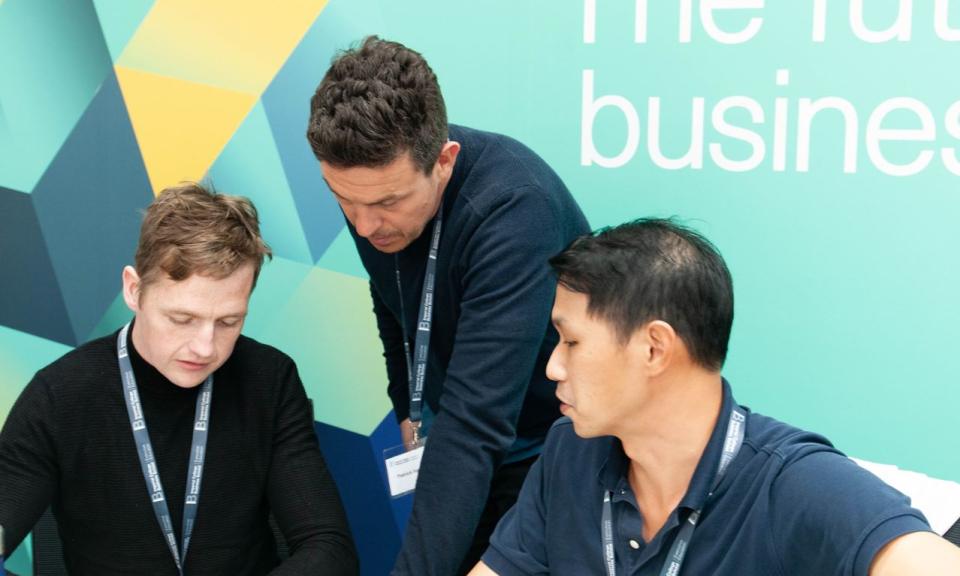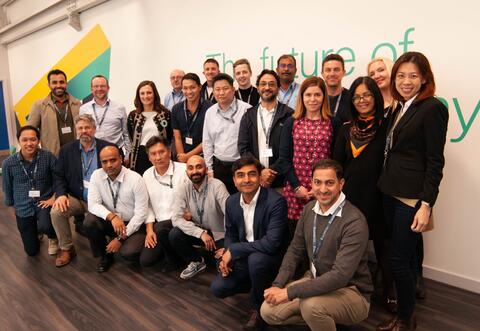
Published
Blog type
Written by Paddy Hanrahan, Strategy & Innovation Director at Helpforce
I spent the first leg of my career at Accenture, a global management consultancy, where I progressed to Managing Director level. I look upon my time there as an A-Z grounding in leadership and management. Over 13 years, I learned excellent skills such as client engagement, people management, digital transformation, and delivering system change.
In 2014 I took a sabbatical, and travelled around California with my wife and nine-month old son. It was during this time that I realised I wanted to do something completely different with the rest of my career. I wanted to devote myself to social change; to use my digital skills to better expose the impact that charities make and my system change skills to do that on a far greater scale.
Since that moment, I’ve helped launch two new charities which have grown and become established UK organisations. With my current employer Helpforce, we’re trying to transform how health and care is delivered through greater involvement of volunteers and communities, and to help manage increasing demand amid an understaffed and underperforming health and social care system.
Volunteering is not a space often associated with innovation by leaders within the NHS and social care. But Helpforce has changed that. We saw that the lack of evidence around the impact of volunteers was holding back the investment and growth of health volunteering. In response we created the Insight & Impact Service, which helps simplify the evaluation process for our clients. In helping them to collect far more data, in turn, we can convert this into evidence against outcomes that health leaders care about.
I had always seen innovation as a natural part of my digital transformation remit - that the two go hand in hand - but there was room for improving my understanding of what makes a successful innovation and, crucially, how we could better use design thinking as an organisation to develop more effective client services within Helpforce.
I researched several similar courses but chose Imperial College Business School’s Innovation: A Design Thinking Approach Executive Education programme due to the institution’s strong brand, the fact that they were offering the course in-person (versus virtual), and the excellent reports I got from course alumni I reached out to.

Ultimately, Helpforce is trying to deliver change in the form of volunteering projects that make a significant impact on people and services, at scale. My hope was that this course could not only improve how we develop innovation within our organisation, but also how we could extend that to our clients (those leading volunteers and volunteer projects at the ‘front line’) to help them innovate themselves.
Following completion of the course there are three main take away ideas that I will look to implement in Helpforce:
Innovation means more than having a good idea - it’s about building a scalable commercial model
Innovation is an overused term these days. How many times per day do we hear a new technology or concept described as “innovative”, “disruptive” or “a game changer?”
On day one of the course we discussed what makes an innovation. Is it an idea? A solution to a problem? Is it something new? Is it something that can scale and make an impact?
The answer is that it’s all of these things. But, crucially, an innovation must also become a successful commercial model. Your proposal must be something so useful, so valuable, that a large number of customers must want to pay for it.
This wasn’t obviously applicable to Helpforce in that we do not have customers and we do not charge for our services. However, by replacing “customers” for “users”, and “pay” for “user value”, this perspective holds completely true.
The importance of Design Research from the very start, and understanding users’ emotions
The course took the 25 course participants firmly out of their comfort zone on the second day by sending us out into the streets of London to talk to random people. It’s never easy approaching strangers, and certainly not in London!
Our goal was to undertake ‘design research’ with target users. Unlike market research which asks very structured questions of a large audience, design research aims to do insightful digging with a smaller user group. Your questions aim to get to their emotions… the frustrations and pain points, and the things that make life better and easier.
The benefit of design research is that it’s done right at the very start – well before you even have any idea around what the possible solutions to the challenge could be. From all of the peers I spoke to on the course it was this approach that was the most radical take away, rather than conducting market research to validate a solution you’ve already developed further down the line. It is certainly something which will improve how we work within Helpforce, as it will enable us to provide truly tailored health and care initiatives that go straight to the heart of what our users need.
Innovation must involve everyone
Later in the course we explored how corporations best embrace innovation. What became clear is that it won’t work just by placing the responsibility on an “Innovation Lead” or department. Innovation is best delivered when it is embedded within the culture and workings of your organisation.
Whether user, customer, employee, manager or supplier - everyone needs to be involved. That user input from the design research needs to be the source and master reference point for all innovation development. And who better than the staff to come up with the ideas and solutions?
I will soon pass on what I’ve learned to the Helpforce team and embed ‘design thinking’ in how we work, and am looking forward to seeing how we can extend this way of working to our many clients across health and care.
This article was originally published on The Economist.

